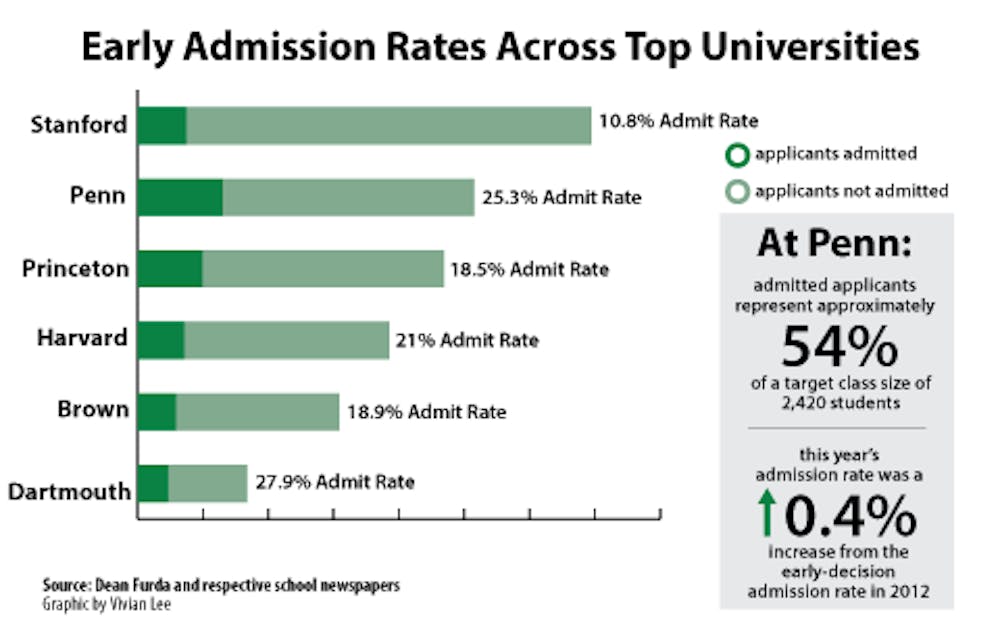

After receiving a record-breaking number of early decision applications this fall, Penn admitted 25.3 percent of the early decision applicant pool for its class of 2018, a small increase from last year’s 24.9 percent acceptance rate.
The Office of Admissions posted acceptance letters at 5 p.m. for 1,299 of the record 5,149 applicants. These students represent approximately 54 percent of the target class size of 2,420 students. The number of applicants grew by approximately 6.7 percent, and the number of admitted students represented an 8.6 percent increase from past years.
“With this year’s applicant pool surpassing over 5,000 applications for the first time in Penn’s history, the Office of Admissions will congratulate the largest, strongest and most diverse admitted ED class,” Dean of Undergraduate Admissions Eric Furda said in a statement.
The average SAT score of the early decision class is approximately 2186, an eight point increase from last year. Fifty-one percent of the admitted students are female while 49 percent are male.
Thirty-eight percent of the admitted students who are citizens or permanent residents of the United States, compared to 35 percent last year, self-reported themselves as black, Asian, Latino or Native American.
The office experienced a 12 percent increase in applicants from Pennsylvania. The University admitted 246 applicants from Pennsylvania—more than from any other state. In second place was New York with 192 successful applicants. The other states with the greatest representation are New Jersey with 145 students, California with 112 students and Florida with 54 students.
Eleven percent of the admitted students are international. The top countries represented are Canada, with 17 students, China, with 16 students, the United Kingdom, with 15 students, India, with 11 students, and France and the United Arab Emirates, each with seven students.
Additionally, due to coordinated efforts between the Office of Admissions and Fine Arts faculty, there was an upswing in students interested in pursuing a major in cinema studies, visual studies or fine arts.
“This year’s applicant pool is unprecedented for early decision, and we responded by admitting an accomplished group who will truly set the tone for the class of 2018,” Furda said. “I am also mindful of the students who were not admitted and want to assure them that there are many options ahead of them and they should embrace that opportunity.”
Across the Ivy League, Harvard University rates also increased. Harvard accepted 21 percent of its applicant pool, an increase from last year’s 18 percent. Dartmouth yielded a 27.9 percent acceptance rate, about a 2 percent decrease from last year.
Princeton University and Brown University’s acceptance rates both experienced marginal decreases from last year, hovering around 18 percent.
Cornell University, Yale University and Columbia University have yet to release acceptance statistics.
Stanford University’s Restrictive Early Action program was more competitive than any of the Ivies’. The California university accepted 10.8 percent of applicants, a decrease from last year’s 11.9 percent.
Correction: A previous version of this article and the subhead that went along with it stated that Dartmouth College’s early decision acceptance rate increased from last year. In fact, it decreased from 29.5 percent in 2012 to 27.9 percent this year.
The Daily Pennsylvanian is an independent, student-run newspaper. Please consider making a donation to support the coverage that shapes the University. Your generosity ensures a future of strong journalism at Penn.
DonatePlease note All comments are eligible for publication in The Daily Pennsylvanian.








